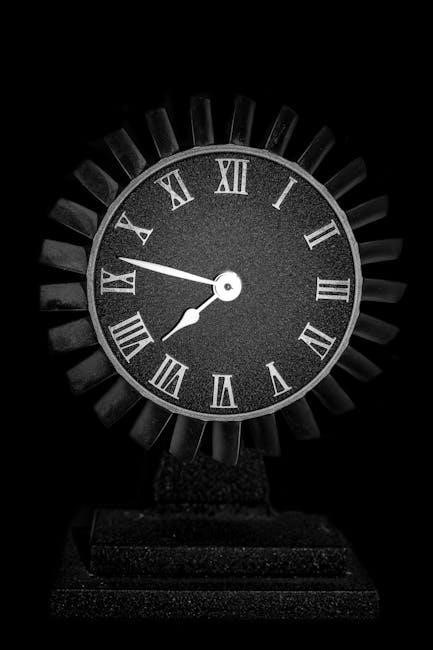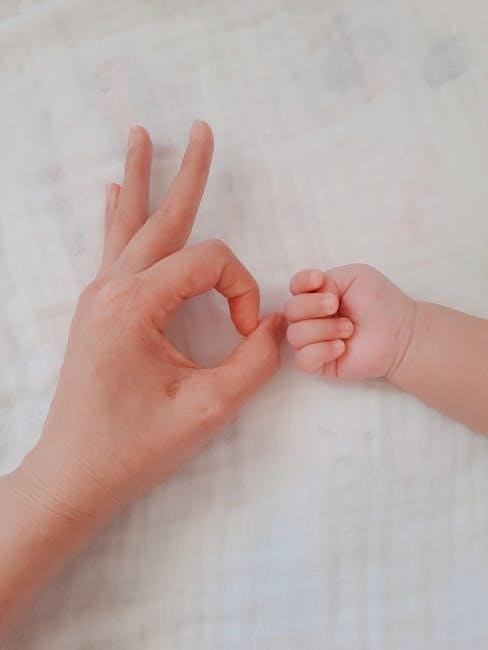
circumference of a circle worksheet pdf
Explore our curated collection of circumference of a circle worksheets available in PDF format. These resources provide ample practice for students to master the concept. They include varied problems, from basic calculations to application scenarios, enhancing understanding and skill development. Download and print for easy use.
Understanding Circumference
Grasping the essence of circumference is fundamental to unlocking various geometric concepts related to circles. Circumference, simply put, is the distance around a circle, akin to the perimeter of other polygons. It represents the total length of the circle’s boundary. Visualizing circumference helps in differentiating it from other circle measurements like area, which quantifies the surface enclosed within the circle, and radius, which measures the distance from the center to any point on the circle’s edge.
A clear understanding of circumference is crucial because it serves as a building block for more advanced mathematical concepts. For instance, it’s essential in calculating the area of a circle, understanding angular measures, and even in fields like physics and engineering where circular motion and structures are prevalent. Furthermore, comprehending circumference enhances problem-solving skills by encouraging spatial reasoning and logical thinking.
Moreover, exploring real-world applications of circumference, such as calculating the distance traveled by a wheel in one rotation or determining the amount of fencing needed to enclose a circular garden, reinforces its practical significance and makes learning more engaging. Therefore, a solid foundation in understanding circumference is not just about memorizing formulas but about appreciating its role in various contexts.
Formula for Circumference
The circumference of a circle can be determined using two primary formulas, each employing different known measurements of the circle. The first formula, C = πd, utilizes the diameter (d), which is the distance across the circle passing through its center. This formula states that the circumference (C) is equal to pi (π) multiplied by the diameter.
The second formula, C = 2πr, uses the radius (r), which is the distance from the center of the circle to any point on its edge. This formula indicates that the circumference (C) is equal to two times pi (π) multiplied by the radius. Both formulas are mathematically equivalent, as the diameter is simply twice the radius (d = 2r).
The choice of which formula to use depends on the information provided in a given problem. If the diameter is known, the first formula is more straightforward. Conversely, if the radius is known, the second formula is more convenient. Understanding both formulas and their relationship to each other is essential for accurately calculating the circumference of any circle, regardless of the given information. These formulas are the cornerstone of circle-related calculations.
Components of the Formula: Pi, Diameter, Radius
Understanding the components of the circumference formula is crucial for accurate calculations. The formula revolves around three key elements: Pi (π), Diameter, and Radius; Each plays a distinct role in determining a circle’s circumference. Pi (π) is a mathematical constant, approximately equal to 3.14159, representing the ratio of a circle’s circumference to its diameter.
It’s an irrational number, meaning its decimal representation neither terminates nor repeats. For practical purposes, it’s often approximated as 3.14 or 22/7. The Diameter is the distance across the circle passing through the center. It’s the longest distance across the circle and is twice the length of the radius. Knowing the diameter allows direct calculation of the circumference using the formula C = πd.
The Radius is the distance from the center of the circle to any point on its edge. It’s half the length of the diameter. When the radius is known, the circumference can be calculated using the formula C = 2πr. Mastery of these components—Pi, Diameter, and Radius—is essential for confidently solving circumference problems and gaining a deeper understanding of circle geometry.
Types of Circumference Problems

Circumference problems can be presented in various formats, each requiring a slightly different approach. One common type provides the diameter of the circle, requiring students to directly apply the formula C = πd. These problems emphasize understanding the relationship between diameter and circumference. Another type provides the radius, necessitating the use of the formula C = 2πr. These problems reinforce the connection between radius and circumference.
Some problems may involve real-world scenarios, such as calculating the distance around a circular garden or the length of fencing needed for a circular enclosure. These application-based problems encourage students to connect mathematical concepts to practical situations. Furthermore, certain problems may require students to work backward, determining the diameter or radius when given the circumference.
These inverse problems challenge students’ problem-solving skills and deepen their understanding of the circumference formula. Additionally, some problems may involve using 3.14 as an approximation for Pi, while others may require using a calculator’s Pi function for greater accuracy. Exposure to diverse problem types is crucial for developing a comprehensive understanding of circumference and enhancing problem-solving abilities in geometry.

Calculating Circumference with Diameter
Calculating the circumference of a circle when given the diameter is a straightforward process using the formula C = πd. This formula states that the circumference (C) is equal to Pi (π) multiplied by the diameter (d). To solve these types of problems, simply identify the diameter of the circle, which is the distance across the circle passing through its center.
Once the diameter is known, multiply it by Pi (approximately 3.14159). For example, if a circle has a diameter of 10 cm, the circumference would be calculated as C = π * 10 cm, resulting in approximately 31.4159 cm. In many worksheets, students may be instructed to use 3.14 as an approximation for Pi, simplifying the calculation to C = 3.14 * 10 cm, which equals 31.4 cm.
These problems help students solidify their understanding of the relationship between diameter and circumference. They also reinforce the concept of Pi as a constant ratio. It is very important to pay attention to the units of measurement. Practice with various diameter values helps students to get comfortable with the formula.
Calculating Circumference with Radius
Calculating the circumference of a circle when given the radius involves using the formula C = 2πr, where ‘C’ represents the circumference, ‘π’ (pi) is a mathematical constant approximately equal to 3.14159, and ‘r’ is the radius of the circle.
The radius is the distance from the center of the circle to any point on its edge. To find the circumference, you first double the radius to get the diameter. Then, multiply this result by π. For example, if a circle has a radius of 5 cm, the circumference would be calculated as C = 2 * π * 5 cm.
Using the approximation of π as 3.14, the calculation becomes C = 2 * 3.14 * 5 cm = 31.4 cm. Worksheets often provide various radius values for students to practice this calculation, improving their understanding of the relationship between radius and circumference.
Understanding this formula is essential for solving geometry problems. It also helps in real-world applications where circular measurements are necessary. Consistent practice with varied radius values solidifies this concept, fostering confidence and accuracy in mathematical calculations.

Using 3.14 as an Approximation for Pi
When calculating the circumference of a circle, using 3.14 as an approximation for pi (π) simplifies the process, making it more accessible for students and practical for quick estimations. Pi, an irrational number, extends infinitely, but for many calculations, 3.14 provides sufficient accuracy.
To use this approximation, simply substitute π with 3.14 in the circumference formulas: C = πd (where ‘d’ is the diameter) or C = 2πr (where ‘r’ is the radius). For example, if a circle has a diameter of 10 cm, the circumference is approximately C = 3.14 * 10 cm = 31.4 cm.

Similarly, if the radius is 5 cm, the circumference is approximately C = 2 * 3.14 * 5 cm = 31.4 cm. While calculators offer a more precise value of pi, using 3.14 is valuable for mental math and situations where calculators are unavailable.
Worksheets often encourage this approximation to build a foundational understanding. While it introduces a slight margin of error, it is negligible for most practical purposes. This method is taught to enhance computational skills. It also helps in grasping the relationship between a circle’s dimensions and its circumference effectively.
Circumference Worksheet Applications
Circumference worksheets extend beyond theoretical calculations. They provide practical applications that demonstrate the relevance of geometry in real-world scenarios. Students learn to apply the circumference formula to solve problems encountered daily. These problems include calculating the distance around circular objects, like wheels, ponds, or decorative items.
For instance, a worksheet might ask students to determine the length of fencing needed to enclose a circular garden, or the distance a bicycle travels in one wheel rotation. Such exercises reinforce understanding and showcase the utility of mathematical concepts.
Furthermore, circumference worksheets often incorporate multi-step problems. Students need to combine circumference calculations with other geometric principles. This encourages critical thinking and problem-solving skills. Some problems might involve finding the radius or diameter of a circle given its circumference, testing their ability to manipulate formulas.
Advanced worksheets may introduce scenarios where students compare the circumferences of different circles. They’ll also examine how changes in radius or diameter affect the circumference. By engaging with these diverse applications, students develop a deeper appreciation for the practical importance of calculating circumference. This makes learning more engaging and meaningful.
Free PDF Resources for Circumference Practice
Numerous websites offer free, downloadable PDF worksheets that provide ample practice in calculating the circumference of circles. These resources cater to various skill levels. They range from basic introductory problems to more challenging applications. This allows students to progressively build their understanding and proficiency.
Many of these worksheets include answer keys. This enables students to check their work and identify areas where they need further assistance. Teachers and parents can use these resources to supplement classroom instruction or provide additional practice at home.
Some websites categorize worksheets by difficulty level or specific skills. For example, you might find worksheets focused on calculating circumference given the diameter, or others that require students to determine the radius first. Some resources also include word problems that require students to apply their knowledge to real-world scenarios.
Educational platforms like Khan Academy, Math-Drills, and Super Teacher Worksheets are excellent sources for free circumference worksheets. These websites offer a wide variety of printable materials. These are designed to reinforce mathematical concepts and improve problem-solving abilities. Always preview the worksheets to ensure they align with the student’s current learning objectives.